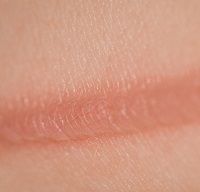It Pays to Be Proactive in Treating Atopic Dermatitis and Eczema
Proactive administration of topical corticosteroid was found to reduce allergen sensitization in patients with atopic dermatitis (AD) as well as the periodic exacerbation of pruritic eczema.

Proactive administration of topical corticosteroid was found to reduce allergen sensitization in patients with atopic dermatitis (AD) as well as the periodic exacerbation of pruritic eczema, in a controlled comparison to treating when symptoms emerge.
The results of the investigator-blinded, randomized controlled study was published in the November issue of the Journal of Dermatology with lead author, Tatsuki Fukuie, MD, PhD, Department of Pediatrics, Hamamatsu University School of Medicine in Shizuoka, Japan.
"Proactive therapy for AD effectively prevents exacerbation," Fukuie and colleagues note. "However, its role in preventing subsequent sensitization to allergens has not been prospectively studied."
Thirty patients aged three months to seven years with moderate to severe AD were randomized to receive one year of either proactive or reactive administration of topical corticosteroid. All patients began with twice daily administration for a maximum of two weeks to reduce or clear all lesions, and then reduced to every other day for two weeks to avoid rebound exacerbation.
Patients in the proactive group continued with twice weekly applications, increasing to twice daily for exacerbations. The reactive regimen consisted initially of an emollient for one week, with corticosteroid then applied twice daily if AD lesions persisted.
Although the average daily amount of corticosteroid was not found to significantly differ between groups, those receiving the proactive regimen had statistically significantly lower scores on measures of symptom severity and quality of life on the final visit at 12 months.
The proactive treatment group also demonstrated significantly lower immunological measures from baseline compared to those receiving reactive treatment. Serum thymus and activation regulated chemokine (TARC) and house dust mite-specific IgE levels remained lower during the 1 year treatment, with the reactive regimen associated with an increase in levels of this allergen specific IgE.
"Thus, stabilization of the symptoms strictly by means of the maintenance therapy may prevent percutaneous sensitization in childhood AD," Fukuie and colleagues conclude.
Related Coverage: